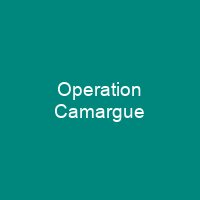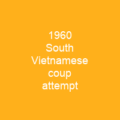Operation Camargue: A French Offensive in the First Indochina War
Imagine a vast, dense jungle where every step could lead to ambushes and hidden dangers. This was the battlefield for Operation Camargue during the First Indochina War.
The Setting and Objectives
Operation Camargue took place from July 28 to August 10, 1953, in central Annam (modern-day Vietnam). The French Far East Expeditionary Corps and Vietnamese National Army aimed to sweep communist Viet Minh forces from Route 1. This key north-south artery was a lifeline for both the French and their enemies.
The Challenges of Jungle Warfare
French armored platoons, airborne units, and troops faced numerous challenges. Ambushes and delays allowed many Viet Minh guerrillas and arms caches to escape. This operation highlighted the difficulty in conducting tight encirclement operations in Vietnam’s jungle due to slow troop movement and enemy foreknowledge.
The Shift in Focus
After Operation Camargue, French forces shifted their focus from offensive operations to creating fortified positions. This culminated in Operation Castor and the Battle of Dien Bien Phu. Meanwhile, Viet Minh Regiment 95 re-infiltrated Route 1 after the operation, resuming ambushes against French convoys until 1962.
The Evolution of the War
The First Indochina War began as guerrilla warfare in December 1946 but evolved into conventional warfare with Chinese aid from 1949. The Viet Minh turned a clandestine movement into a powerful conventional army using asymmetric warfare theory, as demonstrated by the Battle of Nà Sản in October 1952.
International Support
The war received backing from China and America after the Communist victory in the Chinese Civil War in 1949. General Henri Navarre took command of French forces in May 1953, introducing a new offensive spirit based on strong, fast-moving forces. By June 1953, the US had sent substantial military aid:
- 1,224 tanks and combat vehicles
- 120,792 rifles and machine guns
- More than 200 million rifle and machine gun cartridges
- More than five million artillery projectiles
- 302 boats and 304 aircraft
The Operation in Detail
Operation Camargue involved the assembly of 30 battalions, two armored regiments, and two artillery regiments. The operation was named after a sandy marshland in France. Groups A, B, C, and D were tasked with various missions to encircle Viet Minh forces.
The Landing and Initial Movements
On July 27, 1953, French forces landed on the beach and began to occupy it. However, their amphibious vehicles struggled on land, particularly the LVT 4s known as ‘alligators.’ Group B’s battalions crossed the Van Trịnh Cănl canal while Group C advanced into the center of the area.
The Ambushes and Encounters
A minor fire-fight took place when an Algerian company exchanged fire with Viet Minh forces. French tanks entered Dong-Qué village, but Viet Minh ambushed them. Most of Regiment 95 escaped towards the southern end of the lagoon during this battle.
The Pincer Movement
Leblanc requested a paratroop unit to be deployed at the border between two areas. Group C’s units struggled through marshes and arrived late at the jumping-off point for phase two, the canal. Moroccan units came under heavy fire while investigating Phu-An village.
The Final Capture
With the final capture of Phu-An, the pincer movement was complete. However, a 12-kilometer gap remained between Phu-An and the southern edge of the lagoon, allowing Viet Minh to escape. French forces continued to advance into the remaining pocket on July 29, encountering neither Viet Minh nor civilians.
The Aftermath
Efforts were made to rebuild the area suitable for permanent occupation by French forces and Vietnamese civilians. Over 24 villages were placed under the authority of the Vietnamese government, and Regiment 95 was driven from the area. Newspaper reports stated that Operation Camargue was a ‘total success,’ but casualty figures varied.
Operation Camargue, like many operations in the First Indochina War, highlighted the challenges faced by French forces in Vietnam’s dense jungle terrain. Despite initial successes, Viet Minh guerrillas and their tactics proved resilient, setting the stage for future conflicts. The lessons learned during this operation would shape strategies in subsequent battles.

You want to know more about Operation Camargue?
This page is based on the article Operation Camargue published in Wikipedia (retrieved on November 27, 2024) and was automatically summarized using artificial intelligence.







